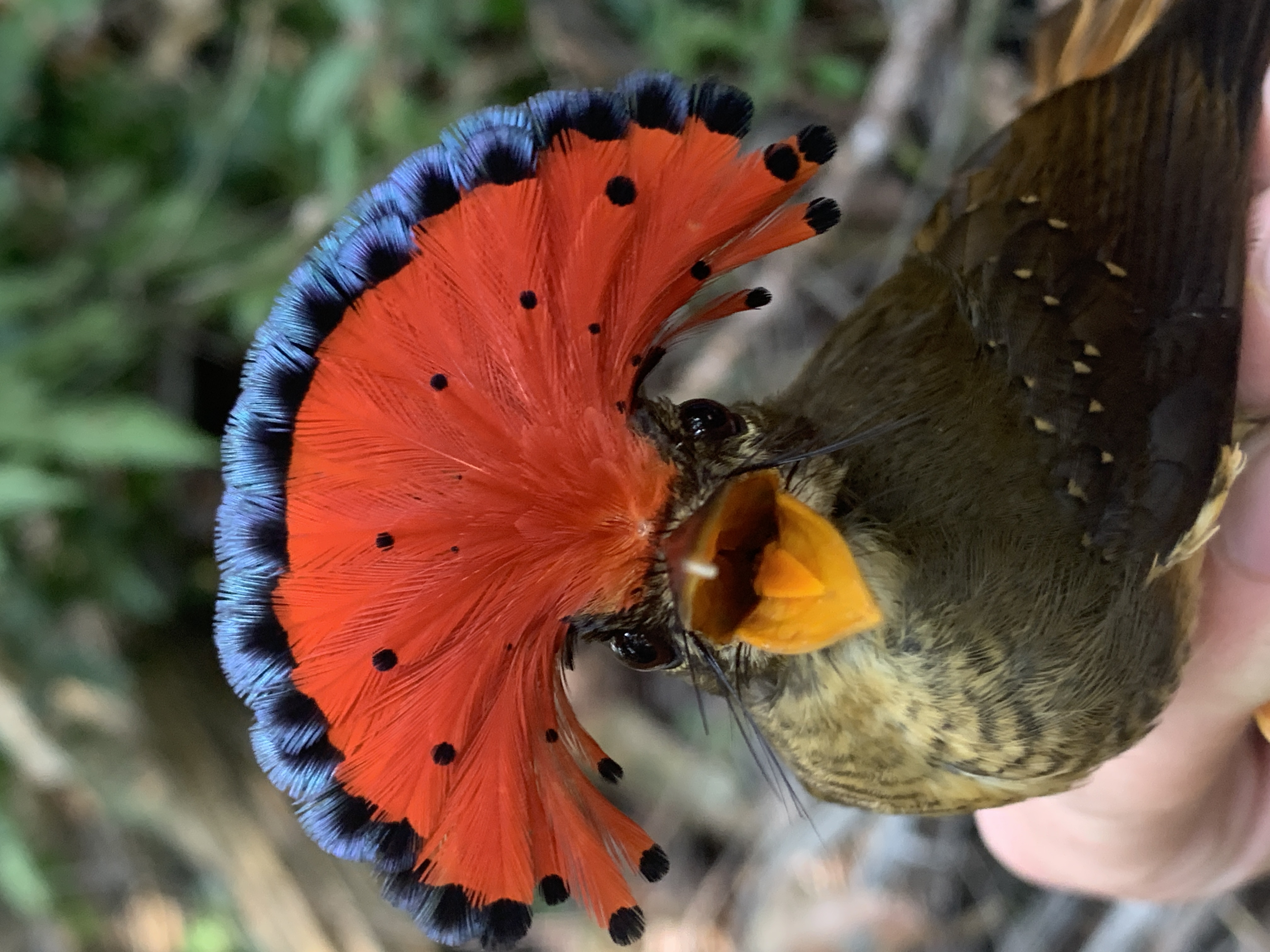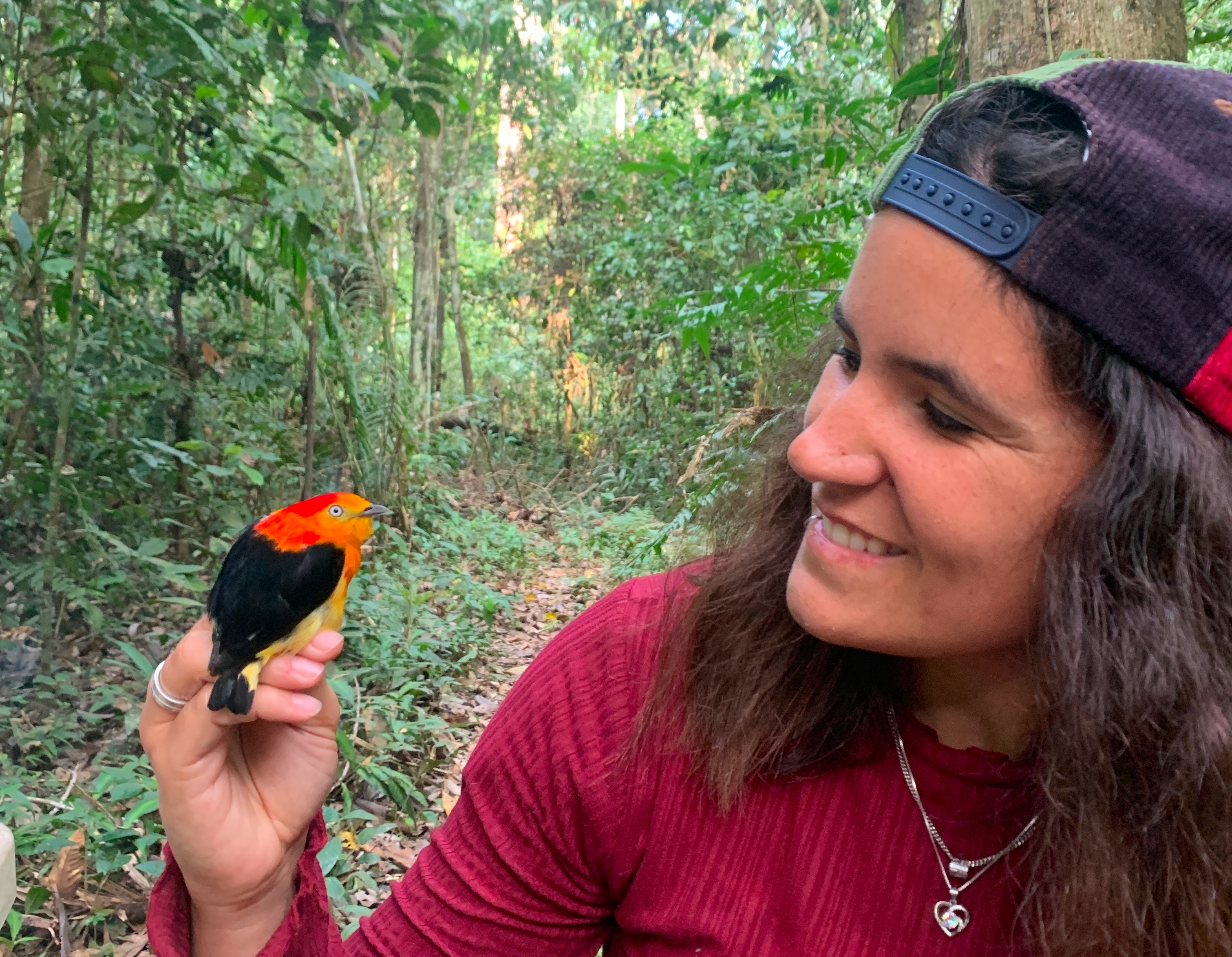
Exploring the Symphony of the Peruvian Amazon
Aug 21, 2023, Aurora Gonzalo Tarodo
We are delighted to publish a post by Aurora Gonzalo Tarodo (@Au_Erithacus), PhD student at the University of Gloucestershire. Aurora is sharing with us some highlights of her field work experience where she used bioacoustic monitoring and the Wilder Sensing platform to support her research work.
Assessing Selectively Logged Forests vs. Primary Forest through Bioacoustics
Bioacoustics and the Symphony of the Amazon
In August 2022, I stepped into my dream made real: I found myself at the threshold of an ecological wonderland, the Peruvian Amazon. I had been anticipating my lifetime ambition of this fieldwork mission for many years, and it exceeded all of my expectations. I was instantly blown away by the abundance of birds. I was thrilled to discover I could see them everywhere, but in the dense tropical forest, I could hear even more birds than I could see.
After years of research and preparation, I was ready, physically and emotionally, supported by a great team and great equipment, to conduct my PhD research and understand the impact of selective logging on one of the Amazon’s most renowned biodiversity hotspots. As soon as I arrived, I set out with Chris Ketola, expert Research Coordinator at Fauna Forever to install the four Wildlife Acoustics Song Meter Micro recorders in carefully selected locations. We accounted for differences between forest, primary forest and selectively logged forest, but also for the type of habitat, floodplain and terra firma. The Song Meter Micro recorders would act as silent sentinels, capturing the essence of the Amazon’s sound day and night during the next 30 days in the dry season.
While the recorders were doing their duty, my day-to-day was filled with challenges, trekking through dense vegetation, battling the unpredictable weather conditions, recorders malfunctioning and the disappointment of memory cards found to be empty after days of recording. With a limited timeframe, it was also mentally challenging, but I overcame these setbacks.
I was also collecting other kinds of data in the hope of assessing the differences between forests using other approaches, specifically bird ringing and point counts. Without question, mist-netting birds in the Amazon was the most thrilling experience of my life.
By the end of my month of fieldwork, I felt the weight of responsibility I carried: to manage, analyse and interpret the bulk of bioacoustic data that could potentially unlock the differences between disturbed and undisturbed forests of the Peruvian Amazon. At this point, I was not even close to knowing what all of this meant!
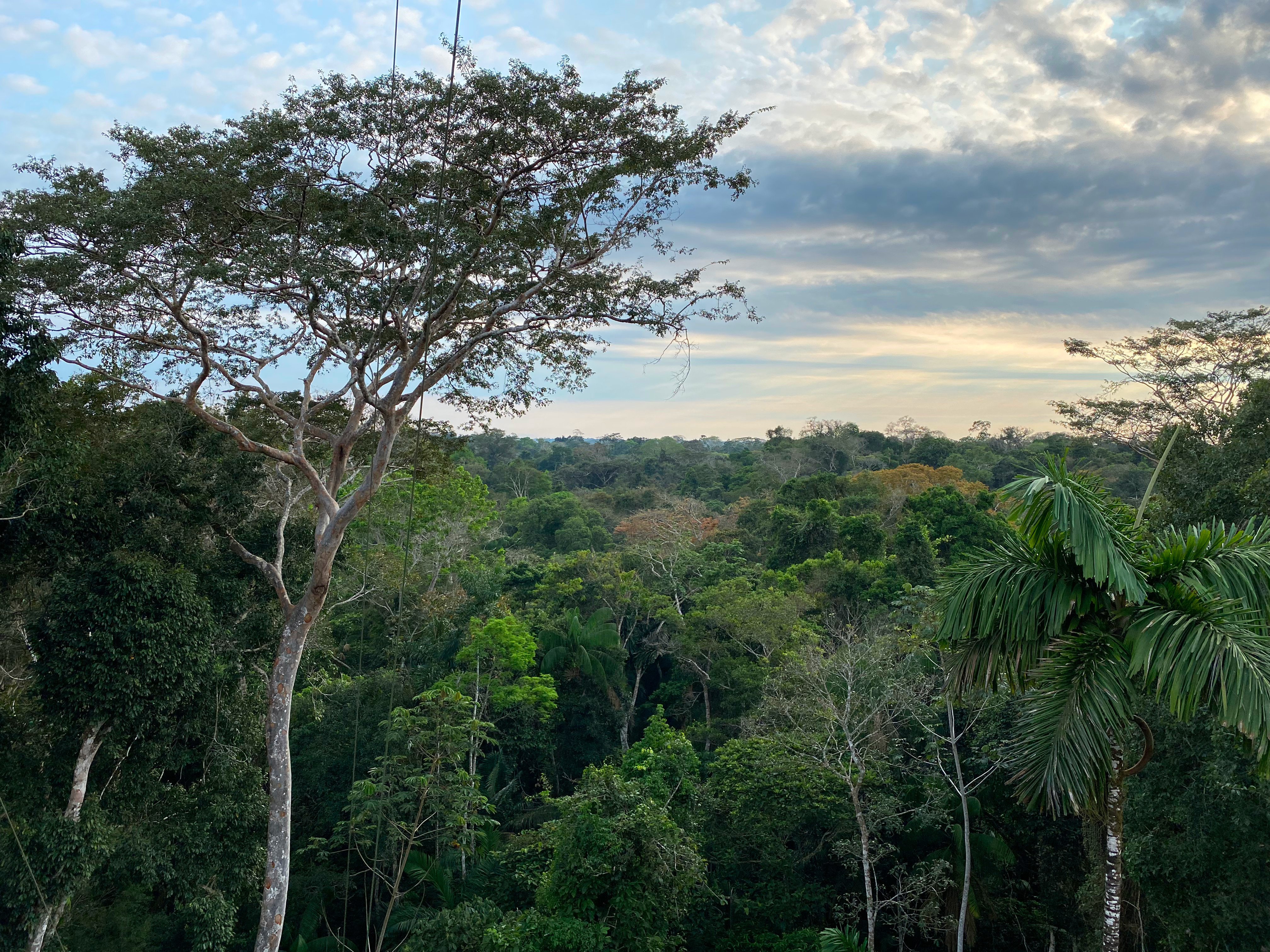
The role of bioacoustics in avian monitoring
Bioacoustic monitoring is a powerful tool in ecological research, it allows us to study and understand avian populations and their behaviour through the analysis of their vocalisations. In the Amazon rainforest, where an astonishing diversity of species exists, bioacoustics offers an unprecedented opportunity to gain insights into the complex interactions between fauna in ways that traditional methods cannot. This pioneering approach has gained popularity in recent years as it provides valuable insights into the biodiversity and ecological health of ecosystems.
Bioacoustics monitoring allows studying birds without disturbing their natural behaviours or habitats. Unlike traditional field surveys that are limited by observation hours, bioacoustics can also provide continuous data. This enables capturing vocalisations during the day and night, detecting cryptic species or offering a comprehensive view of avian activity throughout the day and/or seasons.
The Pioneering Role of Wider Sensing
My adventure in the deep Amazon came to an end and it was now time to analyse the huge 400GB of data we had recorded. My initial plan was to manually detect species recorded at four points each day; dawn, dusk, night and day, these would be divided again into smaller sections and randomly select a few seconds of every hour to put forward for analysis. However, I soon realised that this task alone would require four PhDs to complete! Sectioning the data was an arduous task and there was no way I could do that and analyse this data in a straight and valid way, so I looked for alternatives. My next approach was to use packages for bioacoustic analysis in R, but I soon realised that it was not doable due to the large dataset I had. Naïvely perhaps, I did not anticipate the sheer variety and volume of calls recorded, and I had almost lost hope for my plan to use bioacoustics to understand the differences between primary and selectively logged forests when Wilder Sensing came to my rescue. Wilder Sensing would automatically analyse the data with the use of Artificial intelligence, using BirdNet. This was a very ambitious approach, with many potential pitfalls, as it was the first time that this would have been attempted in the Amazon, but I judged it was worth the risk!
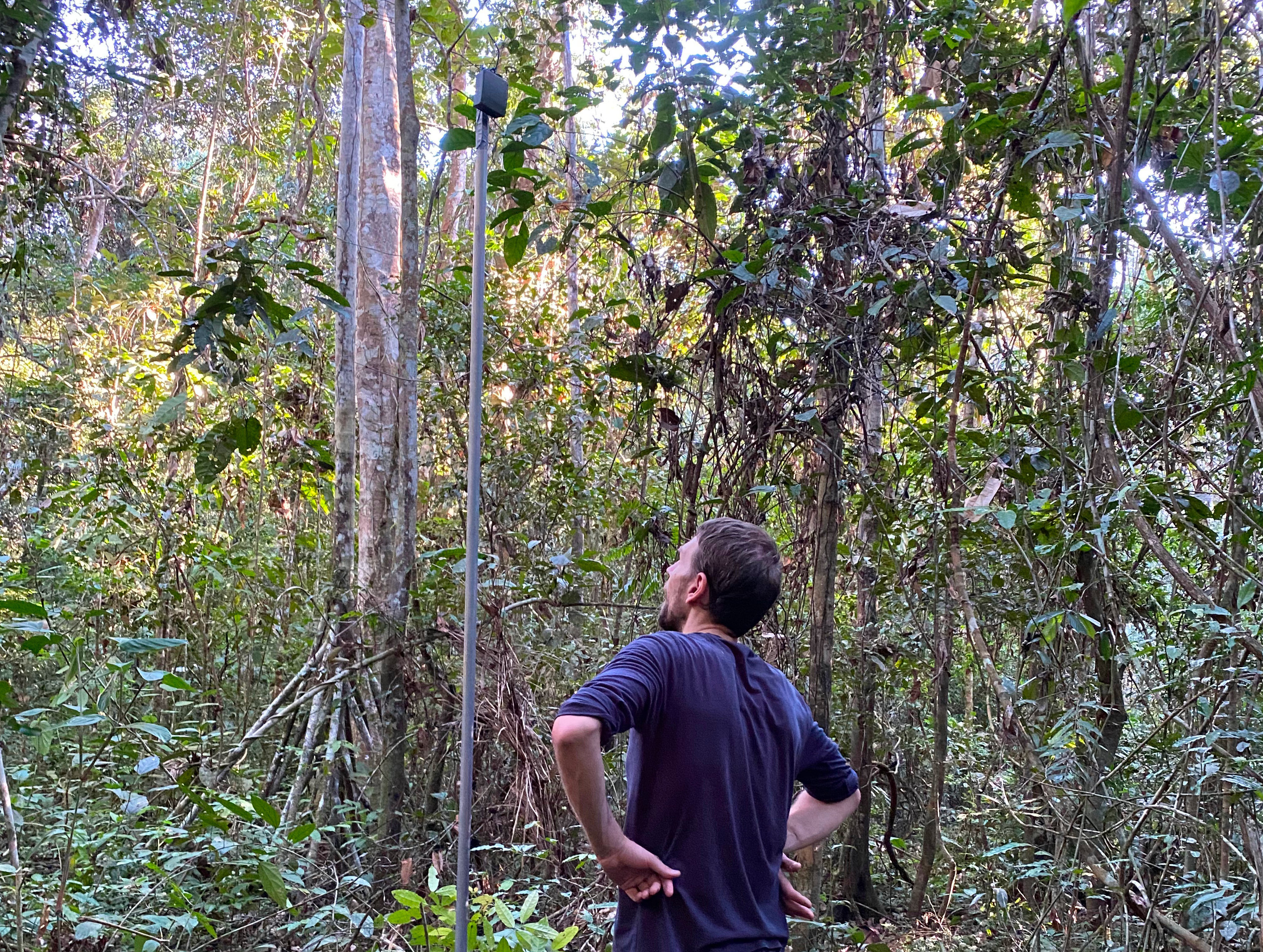
Wilder Sensing was specifically designed to simplify the use of AI, based on models such as BirdNet, by enabling users to simply upload audio files, analyse them and present the results in a series of analytic tools. It doesn’t require any particular technical skills or software.
It took days to upload the enormous 400GB of data to the Wider Sensing platform, and a while for the analysis to be concluded, but an incredible 77,006 records were matched with species, 77,006! Although incredible results and very exciting, it was clear that there were mismatches, so we had to validate them. But even with the validation in the way we had some obvious first results, for example, that the number of species detected in the primary forest was higher at 44.5k (Diagram A) while the secondary forest had 31.56k (Diagram B). The data is complex given the number of species recorded, number of sites, sampling and time of day/night so the analytics start to show fascinating patterns of call abundance and how this changes over time (Diagram C).
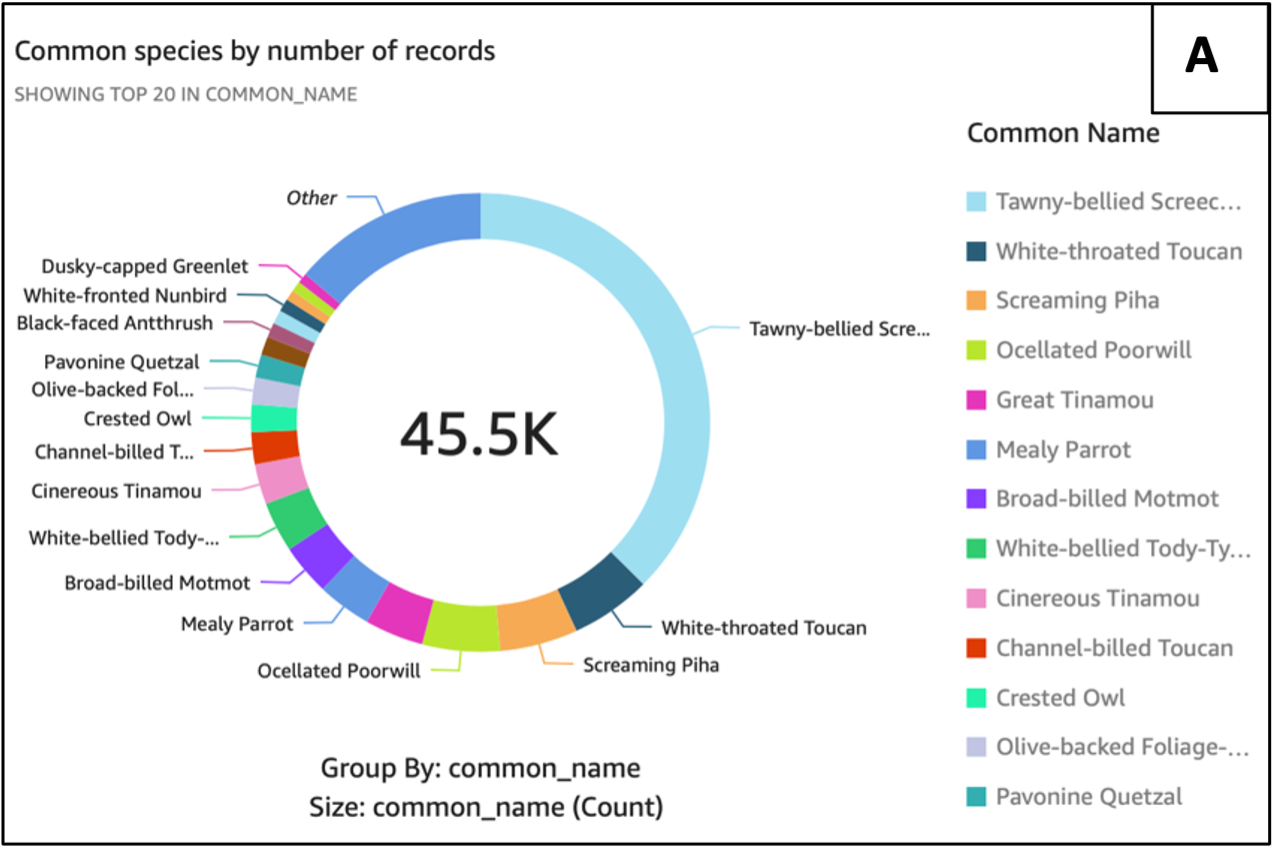
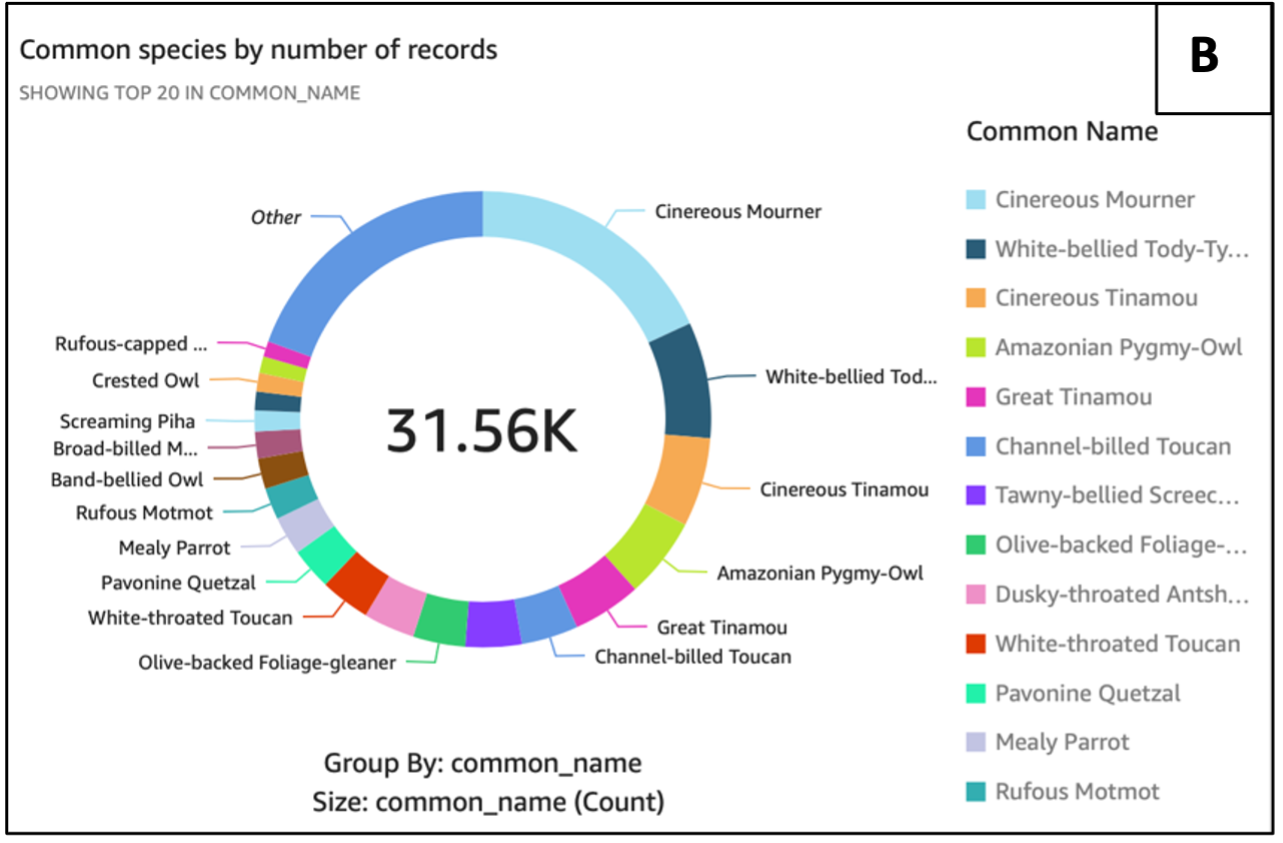
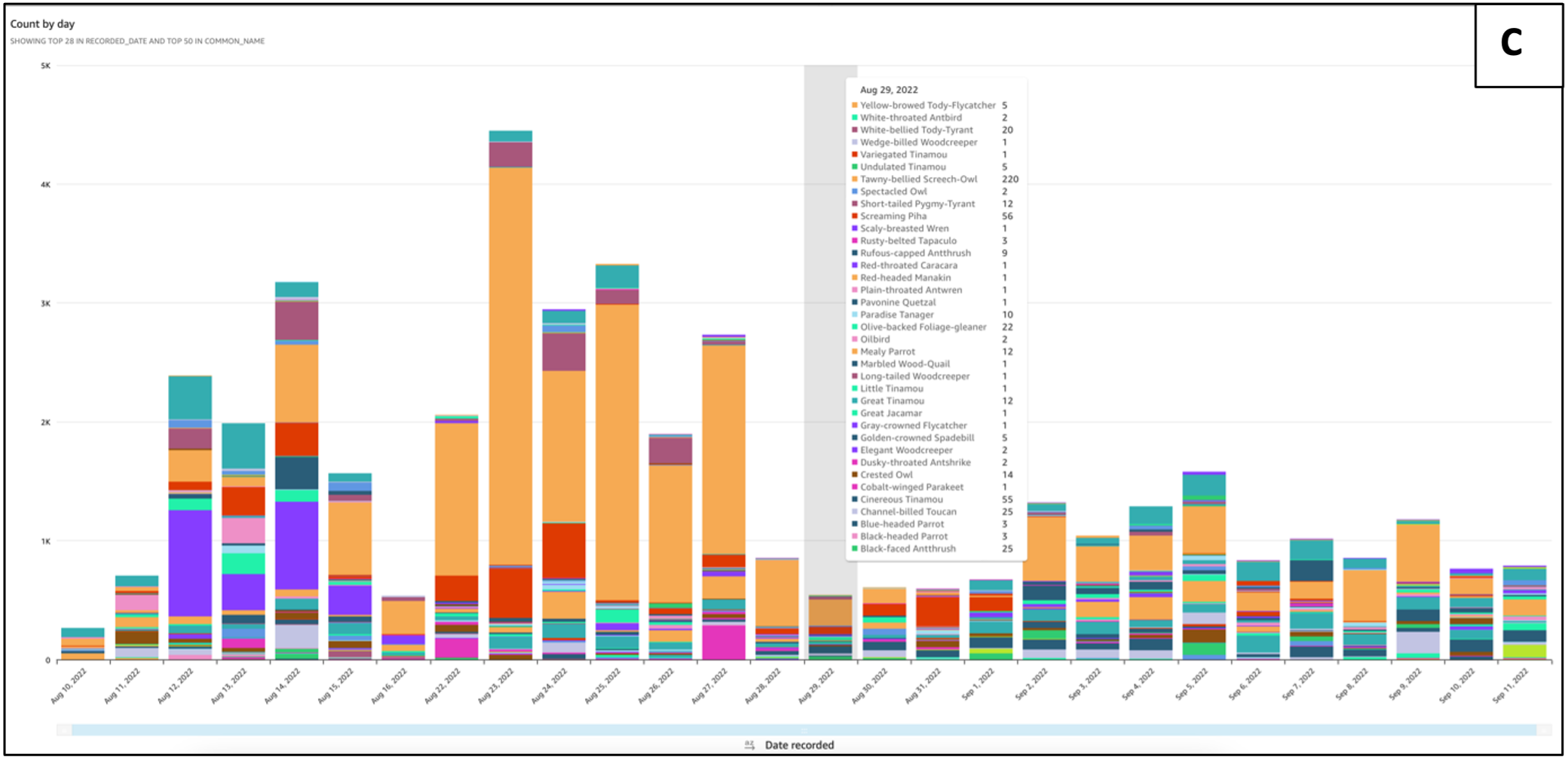
The Validation Process
As a pioneering endeavour, validating the accuracy of Wider Sensing’s species identifications was crucial. Manual validation involved checking all the species identified, contrasting them with existing bioacoustical data and manually listening to the calls, for which I must credit the incredible field knowledge of bird calls of Fauna Forever’s Chris Ketola. This rigorous process would allow me to gauge the reliability of the method and fine-tune the analysis. We are now in the middle of this validation process and although it is early days to conclude if this approach was as successful as we dreamt it to be, at first glance, it does not look bad at all. Chris has been sending me some records verified, and one awaited a very special surprise, he wrote in notes of the given identified song and I quote:
Epic ID!!!! Great record, first for that side!!
That was exciting, it was the very first time that a Little Nightjar Setopagis parvula, was recorded on that side of the river. Probably due to the fact of being a nocturnal species, but the teams on site carry out several kinds of nocturnal surveys for bats, reptiles, amphibians and sometimes mammals and they have never encountered Little Nightjar. There were other species such as the Strong-billed Woodpecker Xiphocolaptes promeropirhynchus or the Rufous-bellied Euphonia Euphonia rufiventris, that were picked up by Wider Sensing, but are very scarce on site and hard to confirm in terms of presence or absence, not to even to understand their abundance. So yes, there are misidentifications, but there is a lot of good identification and potential too!
Next step, Ecological Insights
With the validated data in hand, I will be able to dive into the heart of my research assessing the differences between selectively logged forests and primary forests. I plan to not only understand differences in richness or abundance but also to uncover how bird communities’ behaviours shift in response to the altering forest structures. Already, preliminary findings based on bird ringing and point count data are revealing intriguing patterns, hinting at the delicate balance between human activities and the preservation of this unique ecosystem.
The broader implications of the results of my research could have significant conservation implications, shedding light on the potential consequences of selective logging on the Amazon’s biodiversity. Furthermore, by collaborating with Wilder Sensing, I aspire to help refine their identification algorithms, making this invaluable tool indispensable for avian research in the dense and diverse realms of tropical forests, such as the Peruvian Amazon.
At Wilder Sensing we are extremely proud of having worked with Aurora by providing her with a simple and easy to use platform for storing and analysing her vast bioacoustic data set. At Wilder Sensing we strongly believe in the value of partnership between academia and the private sector: we believe this collaboration as well as the other research projects are a testimony to our commitment to promote an evidence based understanding of the natural world.
For more information on how you can get involved, reach out on our social media channel @WilderSensing or by email.
